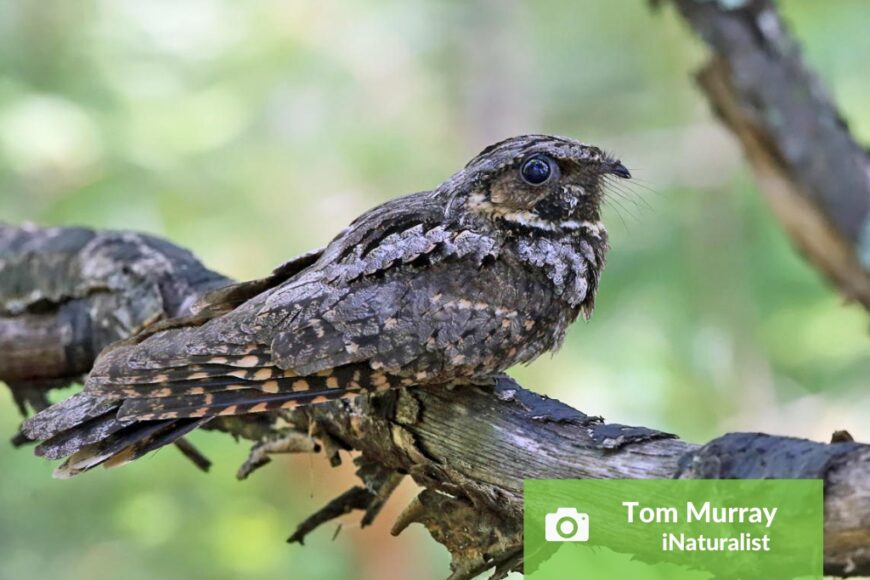Dawson Trail Dispatch, written by Norm Gregoire, August 2022
Page 6 https://issuu.com/dispatch222/docs/dawson_trail_dispatch_august_2022
Sometimes you don’t know what makes a home a home, until you leave. For me, after leaving Manitoba for nearly a decade, I didn’t realize how much I could miss a particular sound I now associate with hot, Southeastern Manitoba evenings. I think everyone can identify when an Eastern whip-poor-will is calling, if not, look it up! The call is really like nothing else you can hear in our province and is a sound I really enjoy.
Eastern whip-poor-will are nocturnal birds, so they are seldom seen, but more commonly heard calling out their name “whip-poor-will, whip-poor-will, whip-poor-will!” At night they search the sky for insect prey, using their large mouth and long bristles around the mouth to funnel prey in. During daylight hours they mostly rest, relying on their mottled brown camouflage to blend in with their surroundings.
When I became aware of a volunteer-based survey for Eastern whip-poor-will and another species at risk, the common nighthawk, I knew I would like to take part. The survey is overseen by Birds Canada and focuses on the nightjar family. Relatively little is known about the nightjar family due to their nocturnal/crepuscular (mostly active at night/mostly active at dawn and dusk) ways. What we do know is populations are declining. Breeding Bird Survey data dating back to 1968 estimates the Canadian population of Eastern whip-poor-will have declined by at least 75%.
Nightjars are part of a larger group of birds called aerial insectivores. Species that belong to this group hunt their insect prey while in flight. The decline in aerial insectivore numbers coincide with the decline, or at the very least the shifting patterns of insect prey. Habitat loss also plays a key role in these species’ declines.
My survey route took me in and around the Lonesand area. Shortly before sunset I started taking notes on if I saw or more likely heard, either nightjar. It is recommended to survey when it is a full moon, as this is when Eastern whip-poor-will tend to be most active. Pair this full moon activity with the noisy call of the Eastern-whip-poor-will, and it is no wonder why they are considered the werewolves of the birding world! The surveying was done for a period of six minutes; after that time I would travel 1.6km and start the process over again for the next hour and a half. In total I was able to record one common nighthawk and four Eastern whip poor-will. Also observed were one black bear, many white-tail deer, and approximately one million mosquitoes. Not a bad night! These recordings, along with GPS coordinates are sent to program advisors and added to the data bank.
These sort of volunteer-based surveys are crucial for the science community, as a major reason for a lack of data on certain species is due to a lack of people collecting the data. If you are interested in a program such as this, please be in contact with me at sarcommunityliaison@gmail.com
As I continue to partake in these surveys throughout the years, I am hopeful that we will see an increase in nighthawk populations. These unique birds are a part of this wonderful tall-grass prairie landscape and a part of what makes home, home.

